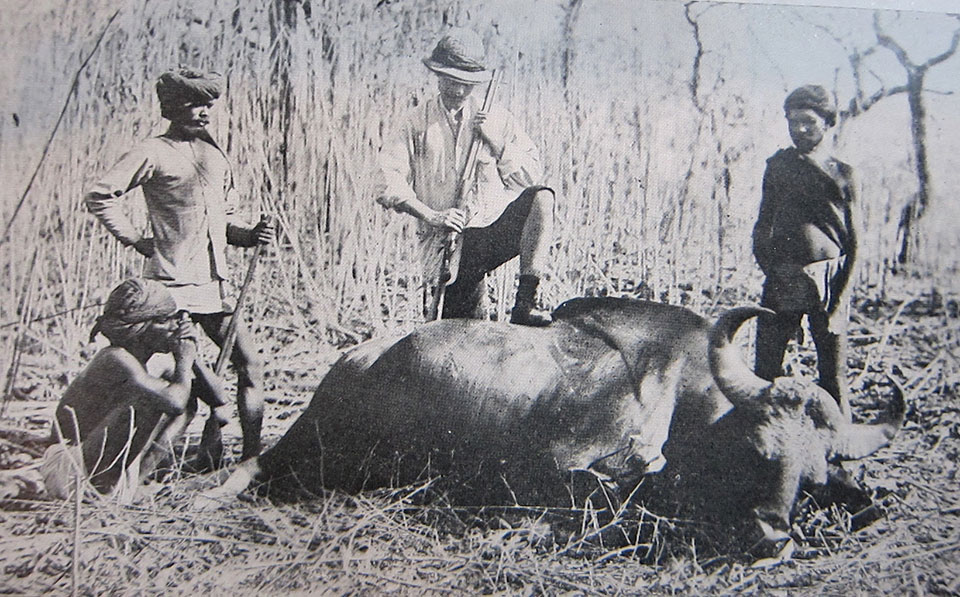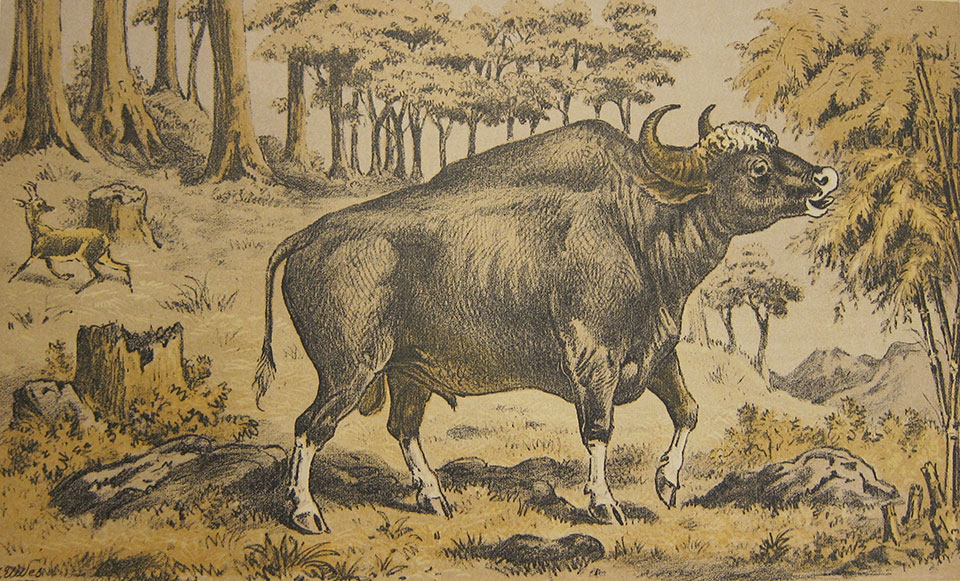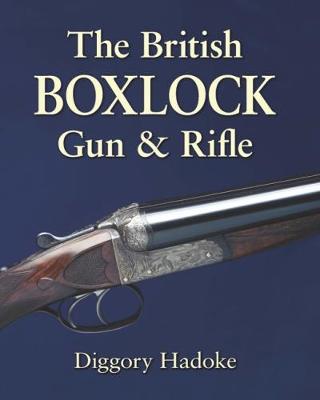The British Empire, by the mid 1800s had expanded to take in many south East Asian countries. Burma came under British rule during this period, Malaya likewise, including Penang, Singapore and Sarawak. India was put well and truly under British control after the 1852 mutiny and the colonies were populated with administrators, officials and soldiers, all playing their part in keeping the wheels turning, the Pax Britannica stable, and the goods and money docking regularly in British ports.
For many of these people, empire building became a family tradition, with generations following one another through public school, university or armed services training into the various branches of colonial administration. My own family are a good case in point. My Irish grandmother was born in Burma to a serving brigadier and married my (also Irish) grandfather in India in 1940. He was then a young officer in the Gurkhas. His grandfather had been the political officer to the Gaekwar of Baroda in the 1870s. My great uncles were involved in commerce in Singapore and Burma until WW2.
For men of this generation, one of the perks of service was the opportunity to hunt in the vast jungles and mountain ranges the Empire provided. In most instances, the locals were un-armed and lived primitively, compared to their European masters. Hunting for large game was the preserve of the colonialists and local royalty and many of them made good use of the opportunity. Perusing old bookshops, one can still find the dusty memoirs of old colonels and their exploits in remote parts of the empire, hunting all manner of beast.
To equip these sportsmen, the gunmakers of Britain had to work hard to develop the right tools for the various jobs; and varied they were. High altitude sheep hunters wanted long range, flat trajectory rifles, mostly of the single shot variety, whereas those hunting thick swamps for big, dangerous game at close quarters wanted rifles that were effective for snap shooting at short range and capable of turning, or stopping, the charge of a 3,000 lbs bull.
The discovery of a dusty set of old horns in a local auction last month provoked my interest in the beast from which they originated and the firearm likely to have been used to engage it. The horns are from a gaur; a huge bovine, once common throughout India, Nepal, Vietnam, and the rest of South East Asia. Their preferred habitat is deciduous forest in hilly terrain. The males can reach 7ft 3” at the shoulder and weight 3,300lbs. Horns can reach 45”.
“Hunting the Indian bison, as it was called by the British in India, was considered a highly noble undertaking. A bull gaur with horns spreading over three feet is as impressive a trophy as anyone could wish for. Formidable, huge, potentially dangerous and elusive, the gaur tested the skill and endurance of any hunter attempting to collect it. The usual method of hunting was to locate fresh tracks and follow, hopefully being able to approach the animal while it was still feeding, for once bedded down it was virtually impossible to approach undetected. Its huge size required shooting with heavy caliber rifles, and the amount of damage a gaur could sustain before succumbing is difficult to believe.” (Capt. John H. Brandt)
The equipment for gaur hunting varied as the nineteenth century progressed and we must not forget that a good deal of game shot by colonial sportsmen would have been taken with the military rifles of the day, those being the most available.
In the 1850s the .577 calibre muzzle-loading Enfield rifle with Minie bullet was introduced, developing into the breech-loading 1866 Sneider-Enfield of the same calibre. In 1871, the Martini-Henry .577/.450 replaced the Enfield, this was replaced before WW1, by the .303 Lee-Enfield, remaining in service well into the mid 20th century. While military ammunition was widely available, many companies built sporting rifles in the same calibres, for convenience, rather than the optimal sporting qualities of the ammunition. In either military guise, or sporting, these rifles took countless head of game of all types throughout the nineteenth century.
For the wealthier, more discerning sportsman, specialist rifles were bought for overseas postings. Those in pursuit of gaur were invariably attracted by the comforting bulk of the bore rifles.
An illustration of the opportunism of many hunters as to calibre selection is found in this tract by C.E Gouldsbury, writing in 1915: ‘I bagged a very fine bull bison (gaur) …with the .360 express which I invariably carried in case I came across any pea fowl’. The shot was in the jugular at ten yards.
However, Gouldsbury recalls more typical hunting trips for gaur using ‘a 10-bore rifle by Dickson’. He recounts one hunt thus: ‘I fired immediately, aiming at the point of the shoulder…following the blood trail we came upon him…on seeing us he trotted forward a few paces, pawing the ground and looking altogether exceedingly unpleasant. I now fired at his chest, bringing him to his knees, but he was up again in a moment and would have charged but I ran closer and floored him with a bullet in the neck.
As we can see, typical gaur hunting was usually close combat with a big double rifle. For a gun-maker’s perspective on the double rifles of the day, we can revert to W.W Greener, who advised: ‘The double 8-calibre for brass cartridge cases is the better sporting weapon (for dangerous game). He goes on that this ‘will fire a two ounce ball or conical bullet weighing three ounces – sufficiently large for the biggest game and a thoroughly practical weapon.
A 24 inch barrelled ‘double eight’ would weigh in at 15lbs, but could be made down to 11 1/2lbs with 20 inch barrels. As for accuracy, Greener reports ‘Mr Henry of Saigon’, achieving eight shots of spherical ball in a square 2 3/8” x 1 9/16” at 50 yards. A competent sportsman could expect to hit a 12” circle at 100 yards, even though the vast majority of shots would be taken at much closer distances. The 8-bore and 10-bore double rifles of the mid-to late 19th century were not crude hammers, they were already very effective, surprisingly accurate, specialist hunting tools.
We can imagine our ‘nimrod’ to use a much favoured term of the era, pluckily heading out, hoping to bag a good gaur in the Indian or Malay forest, thick and wet, evergreen, visibility at close quarters only a few yards, setting forth with the best rifle of the day. Were money no object, he would have carried something like this: a Holland & Holland 8-bore rotary under-lever hammer rifle, with 25 1/2” damascus barrels, treble grip action regulated for a charge of 8 or 10 drams of black powder in a 3 1/2” case. The pistol grip stock with grip-cap and the back-locks with bolted hammers. This would have come cased, with a bullet and ball mould, loading tools and instructions and weighed 15 1/2lbs.
Today, you can still hunt gaur in one or two places, but for most of their natural range, they are protected. Numbers are highest in India and they can be seen in the wild in many national parks, from India to Thailand. I don’t think I’ll ever get to hunt one but, for now, I’m content to look at the old horns and wonder what adventure brought them to England all those years ago, and the life, times and rifles of the sportsman who bagged the old beast.
Published by Vintage Guns Ltd on (modified )



